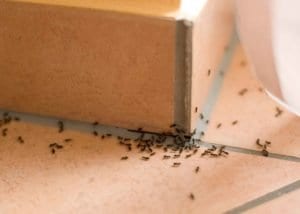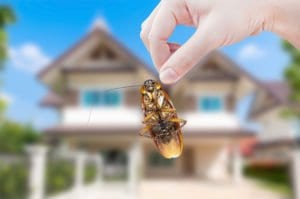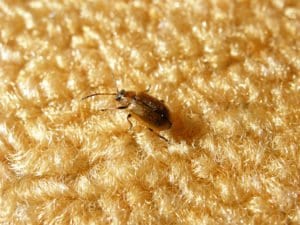Get a free quote
If you have questions about our services, plans, or pricing we are here for you. Fill out the form below and we will communicate with you by email (and of course provide you with a free estimate).
FEBRUARY 01 2022 /
On this season of The Real House Pests, we’re in North Carolina, a state home to a wide variety of pests. But when these pests decide to move into homes (uninvited might we add), things get a little dramatic to say the least. Stay tuned to see how the madness will play out.
 A North Carolina home can see a number of ant species at any given time of the year. The most common indoor ant is the odorous house ant, but you might also see other ant species including acrobat ants, little black ants, ghost ants, pavement ants, pharaoh ants, or Argentine ants.
The odorous house ant prefers to live outdoors in a mulched garden bed, along a home’s cement foundation, or underneath a pile of earth debris, but will make its way indoors for a fancy meal or place to stay. You can prevent the odorous house ant from entering your home uninvitedly, by making sure cracks or crevices in your foundation are sealed, mulch and piles of debris are located far away from your home, and potential ant food sources (crumbs, sugar, etc) are unobtainable.
Because the odorous house ant typically comes in for food, you’re most likely to find them trailing around your kitchen. When you crush one you’ll see where they got their name from, as they will emit a coconut-like odor.
Read more on what to do when ants intrude on your home!
A North Carolina home can see a number of ant species at any given time of the year. The most common indoor ant is the odorous house ant, but you might also see other ant species including acrobat ants, little black ants, ghost ants, pavement ants, pharaoh ants, or Argentine ants.
The odorous house ant prefers to live outdoors in a mulched garden bed, along a home’s cement foundation, or underneath a pile of earth debris, but will make its way indoors for a fancy meal or place to stay. You can prevent the odorous house ant from entering your home uninvitedly, by making sure cracks or crevices in your foundation are sealed, mulch and piles of debris are located far away from your home, and potential ant food sources (crumbs, sugar, etc) are unobtainable.
Because the odorous house ant typically comes in for food, you’re most likely to find them trailing around your kitchen. When you crush one you’ll see where they got their name from, as they will emit a coconut-like odor.
Read more on what to do when ants intrude on your home!
 There are more than 4,500 types of roaches in the world, 69 of which can be found in the U.S. But the four species of cockroaches most commonly found in North Carolina homes by pest management specialists include the American cockroach, the brown-banded cockroach, the German cockroach, and the oriental cockroach.
Roaches are sneaky when it comes to finding a way into your home. Sometimes it means burrowing inside of a paper bag from the grocery store or hitching a ride in your briefcase from work. While other times it involves creeping in through a tiny gap around a door, pipe, or window, or in through the cracks of a foundation. Regardless, once they’re in it will take some serious work to get rid of those cockroaches.
It is a common misconception that roaches are attracted to messy households. Instead, roaches that invade homes are seeking out warmth, moisture, darkness, and food (Your home’s drain makes a cozy place for a roach to live) Look for signs of roaches and know that if you see one, there is likely a whole bunch more. Call a pest expert immediately!
There are more than 4,500 types of roaches in the world, 69 of which can be found in the U.S. But the four species of cockroaches most commonly found in North Carolina homes by pest management specialists include the American cockroach, the brown-banded cockroach, the German cockroach, and the oriental cockroach.
Roaches are sneaky when it comes to finding a way into your home. Sometimes it means burrowing inside of a paper bag from the grocery store or hitching a ride in your briefcase from work. While other times it involves creeping in through a tiny gap around a door, pipe, or window, or in through the cracks of a foundation. Regardless, once they’re in it will take some serious work to get rid of those cockroaches.
It is a common misconception that roaches are attracted to messy households. Instead, roaches that invade homes are seeking out warmth, moisture, darkness, and food (Your home’s drain makes a cozy place for a roach to live) Look for signs of roaches and know that if you see one, there is likely a whole bunch more. Call a pest expert immediately!
 Fleas and ticks aren’t just considered pests in North Carolina, they’re pests in every U.S. state. The biggest difference being that some states have longer and worse flea and tick seasons than others.
Fleas and ticks can quickly become house pests by hitching a lift indoors on you, your family, or your pet. In order to avoid these unwanted house guests, get in the habit of checking you, your kids, and your furry friends over after any time spent outdoors (especially if you’re in areas frequented by deer and other wildlife).
Once these pests are in, there’s no telling what they’ll do or where they’ll go. Fleas can often be found hiding out in your carpet whereas ticks will immediately look for a blood source to feed on.
It should be noted that fleas and ticks aren’t just pests, they’re also dangerous disease-carrying insects that could potentially infect your entire home (family and pets!) with Lyme disease, typhoid fever or tapeworms.
Fleas and ticks aren’t just considered pests in North Carolina, they’re pests in every U.S. state. The biggest difference being that some states have longer and worse flea and tick seasons than others.
Fleas and ticks can quickly become house pests by hitching a lift indoors on you, your family, or your pet. In order to avoid these unwanted house guests, get in the habit of checking you, your kids, and your furry friends over after any time spent outdoors (especially if you’re in areas frequented by deer and other wildlife).
Once these pests are in, there’s no telling what they’ll do or where they’ll go. Fleas can often be found hiding out in your carpet whereas ticks will immediately look for a blood source to feed on.
It should be noted that fleas and ticks aren’t just pests, they’re also dangerous disease-carrying insects that could potentially infect your entire home (family and pets!) with Lyme disease, typhoid fever or tapeworms.
 There are about 50 different kinds of termite species found in North America, each of which is categorized into one of three groups–subterranean, dampwood, or dry wood termites. Each category of termite has its preferred living environment, whether it be below ground in mud tubes or in piles of wood, but all will make their way into your home for a tasty meal.
Termites can hide and wreak havoc in a home for quite a while before they’re discovered–keep in mind there may be little to no warning signs of an infestation until it’s too late.
Unfortunately, when termites move into your home, it is you who has to foot their food bill which can cost thousands! (It’s estimated that termites cause more than $5 billion in property damage every year!)
Early detection is key when it comes to termites. Check these five places of your home for termites now, as you could be sharing your home with them and not even know it! Follow up with our termite control tips, things you can do to avoid a termite infestation.
There are about 50 different kinds of termite species found in North America, each of which is categorized into one of three groups–subterranean, dampwood, or dry wood termites. Each category of termite has its preferred living environment, whether it be below ground in mud tubes or in piles of wood, but all will make their way into your home for a tasty meal.
Termites can hide and wreak havoc in a home for quite a while before they’re discovered–keep in mind there may be little to no warning signs of an infestation until it’s too late.
Unfortunately, when termites move into your home, it is you who has to foot their food bill which can cost thousands! (It’s estimated that termites cause more than $5 billion in property damage every year!)
Early detection is key when it comes to termites. Check these five places of your home for termites now, as you could be sharing your home with them and not even know it! Follow up with our termite control tips, things you can do to avoid a termite infestation.
Don't wait, schedule an appointment with our termite control experts today!